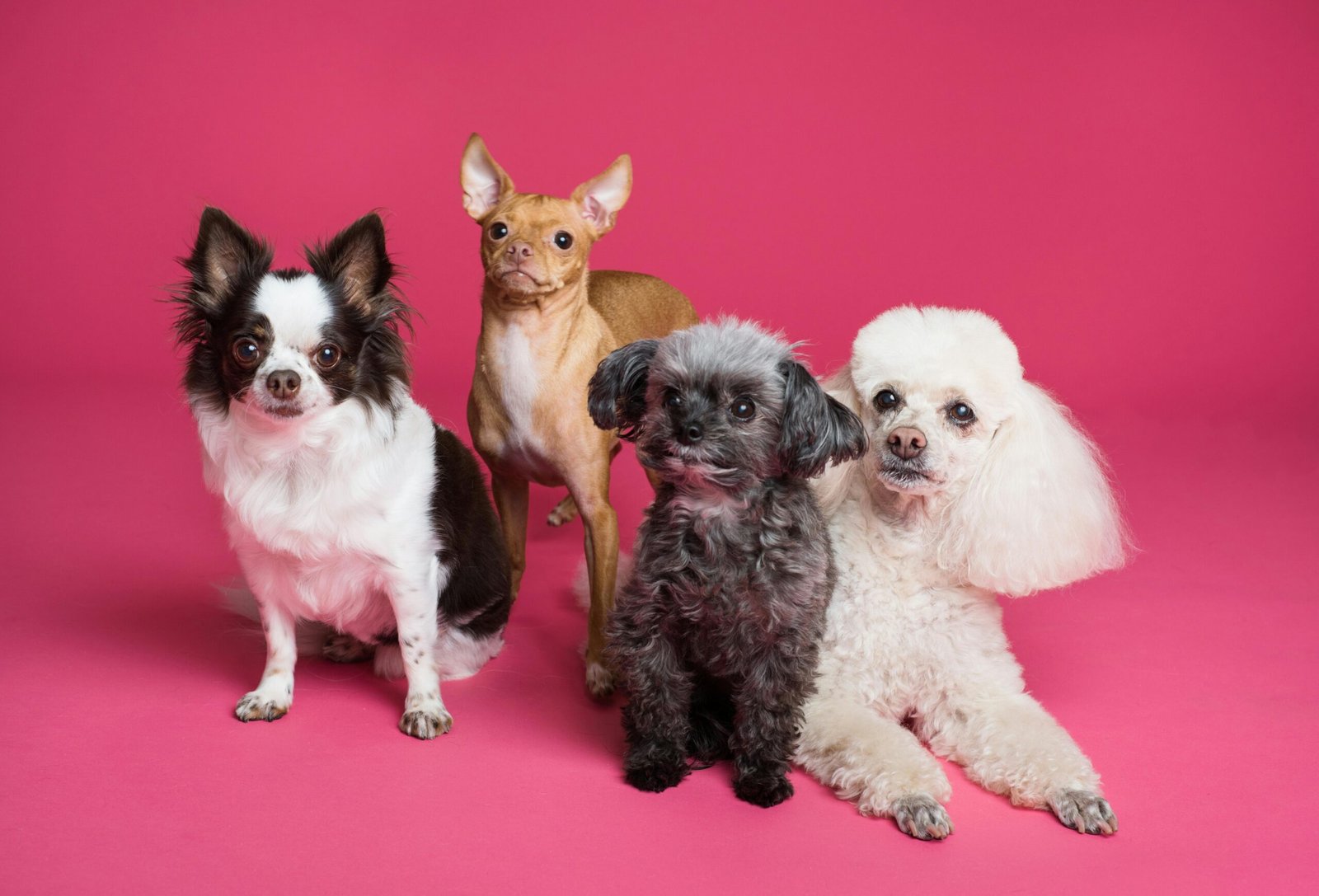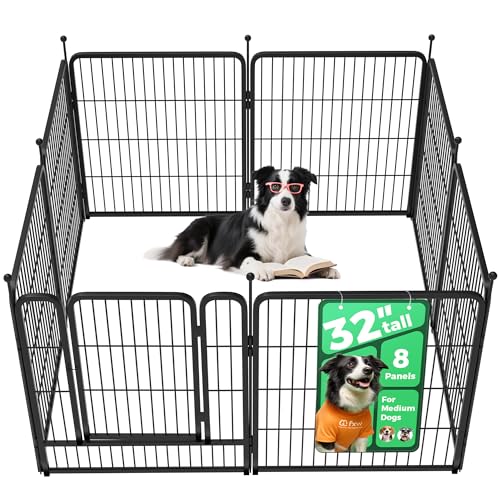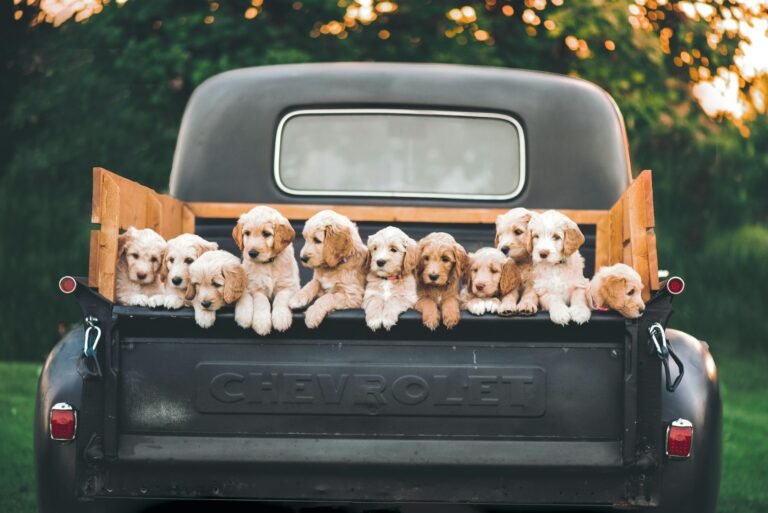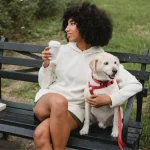I still remember the first time I walked into a client’s house and met a dog who wanted absolutely nothing to do with me. Tail tucked, eyes darting — and there I was, frozen with treats in one hand and optimism in the other. That’s when I realized: dog sitting isn’t just about feeding and walking. It’s about connection. Real, gentle, trusting connection. This blog is my personal dog sitting success guide, filled with tips that actually worked — not just fluff you’ve seen a hundred times. These are the lessons I learned from dozens of different dogs, each with their own little quirks and fears… and all the moments that taught me how to connect with a dog as a sitter.
If you’re here looking for practical, heartfelt, trial-by-fire advice — not another generic “Top 10” checklist — you’re in the right place
Table of Contents
Tip 1: Learn the Dog’s Language Before You Say a Word
(Keywords: Dog sitting success guide, How to connect with a dog as a sitter)
Here’s something I learned the hard way — dogs don’t care how much you know until they know how much you care. And believe me, they feel it. I used to think the trick to dog sitting success was structure, routine, and lots of treats. But one shy rescue pup named Luna turned that upside down.
I’d show up on time. I’d offer her peanut butter snacks. I’d even bring her favorite toy (a squeaky taco 🌮 — no joke). Still, nothing. No eye contact. She’d hide under the couch like I was the boogeyman. I felt like a total failure. Until I stopped trying to “train” her — and started listening.
I sat on the floor, no phone, no agenda. Just… sat. I mimicked her body language. Yawned when she did. Looked away when she looked anxious. That moment — when she finally took a cautious step toward me — changed everything. That’s when I realized:
Connecting with a dog as a sitter starts with silence, softness, and patience.
So now, my dog sitting success guide always starts here:
Read the body language:
- Tucked tail = fear
- Lip licking = stress
- Whale eye (when they show the whites of their eyes) = anxiety
- A full-body stretch with a tail wag? You’re in. That’s a “hello!”
Spend your first few minutes observing instead of jumping into action. Let the dog set the pace, not your checklist. And yeah, sometimes that means waiting 20 minutes for a nose sniff. But that first sniff? It’s a win.
💡Pro Tip:
Use calming signals yourself — like slow blinks, relaxed posture, or even lying down at a safe distance. Dogs read energy better than we read books.
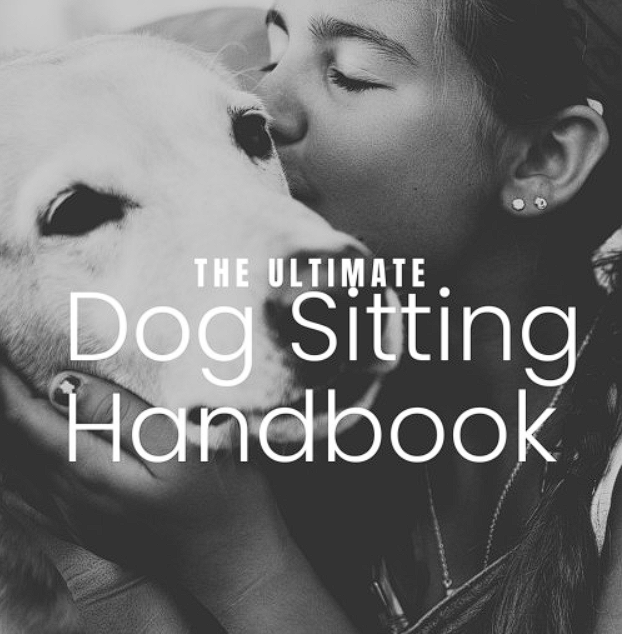
Ultimate Dog Sitting Success Guide – At a Glance
Fun & Enrichment: Keep dogs engaged, playful, and mentally happy.
Start Smart: Learn your role, build trust, and exceed client expectations.
Prep Like a Pro: Set up a safe, comfy space with all the essentials.
Daily Care Made Easy: Master feeding, walking, and routines.
Health & Safety First: Spot issues early and handle emergencies.
Secure & Supervise: Keep dogs safe indoors and out.
Behavior Basics: Reinforce good habits and handle challenges.
Tip 2: Respect the Owner’s Routine Like It’s Sacred
(Keywords: Dog sitting success guide, How to connect with a dog as a sitter)
Let me be blunt: dogs thrive on routine — even more than we do. And when you’re walking into their space, you’re not just stepping into their home — you’re stepping into their safe zone. That means their dinner at 6:00 p.m. sharp isn’t just a habit. It’s a heartbeat. It’s security.
I once made the mistake of feeding a pug named Oliver 30 minutes later than usual. What could go wrong, right? He was chill, loved belly rubs, and snored louder than a grandpa on a couch. But that night? Oliver flipped. He barked at the fridge, paced the hall, and refused to look at me like I had betrayed our unspoken bond
Lesson learned: the dog sitting success guide isn’t just about treats and toys. It’s about showing the dog, through actions, that their world isn’t falling apart just because mom and dad are gone. Consistency is connection.
What to Ask Every Pet Parent:
- When does your dog eat?
- What’s the exact walking route?
- Does your dog get a bedtime treat?
- Are there forbidden zones in the house?
- Any favorite phrases that calm them down?
Even small things — like using the same word the owner uses (“go potty” vs. “go outside”) — help build familiarity and trust. That’s your bridge to connect with a dog as a sitter who might be missing their family and confused about the sudden stranger in their space.
Real Talk:
Following the routine isn’t about being perfect — it’s about being predictable. And in a dog’s mind, predictability equals safety.
Tip 3: Expect the Unexpected (Because Dogs Don’t Read the Script)
(Keywords: Dog sitting success guide, How to connect with a dog as a sitter)
Let me tell you about the time I was watching a golden retriever named Max. Sweetest fluffball ever. Loved fetch, belly rubs, and cheese cubes. Easy gig, right? Well… until the sky opened up like something out of a disaster movie.
We were two blocks from the house when thunder cracked. Max bolted. I dropped the leash (rookie panic), slipped in the mud, and fell straight into what can only be described as the aftermath of something Max ate and definitely wasn’t supposed to. You get the picture
I sat there soaked, grossed out, and thinking, “What the heck am I doing?” But then, Max came back. Shivering. Terrified. I wrapped him in my hoodie and just sat. We didn’t move for ten minutes. That was the moment we bonded — not because I did everything right, but because I stayed.
Here’s the truth they don’t tell you in every glossy “Dog Sitting Success Guide” — things will go wrong. Dogs will freak out. You’ll step in poop. They’ll bark at shadows or get sick on the carpet. Your job isn’t to be perfect. Your job is to be there — calm, steady, unshaken.
What I Now Keep in My “Emergency Dog Bag”:
- Extra leash (just in case one snaps)
- Towels (wet dogs happen, often)
- Dog-safe wipes
- Portable water bowl
- My client’s vet contact & local emergency vet
- A treat pouch filled with bribery-level snacks
Why This Matters for Connection:
When a dog sees you stay grounded through chaos, they start to trust you in deeper ways. It’s how you move from “random sitter” to “safe person.” And that’s everything when you’re trying to connect with a dog as a sitter.
Real Growth Comes From Discomfort
I learned more about trust in that soggy thunderstorm than I did from any YouTube dog training video. Every challenge is a chance to show up, not just show off.
Tip 4: Leave a Scent of You (Or… Your Sock) Behind
(Keywords: Dog sitting success guide, How to connect with a dog as a sitter)
This tip sounds ridiculous. And honestly, if I hadn’t seen it work with my own eyes — multiple times — I wouldn’t believe it either.
So here’s what happened…
I was dog sitting for a rescue mutt named Daisy. Sweet, but nervous. The kind of pup that startles when you sneeze. The owners mentioned she had separation anxiety, but I wasn’t expecting full-on pacing, crying, and digging at the door every time I left the room.
Nothing worked. Not the treat puzzles. Not the calming spray. Not even the peanut butter-stuffed Kong (which, by the way, usually works like a charm).
Desperate, I took off my sock (don’t judge), balled it up, and tucked it into her bed.
When I came back from my quick store run… Daisy was curled up, asleep. With my sock between her paws.
I nearly cried.
That day, I learned something that no dog sitting course had ever taught me:
Dogs connect through scent. And your scent = familiarity.
How to Use This Trick (Safely):
- Before leaving, give the dog something soft that smells like you — a sock, old shirt, or scarf.
- Make sure it’s clean enough not to stink, but used enough to carry your scent.
- Always ask the owner first — some dogs may chew or ingest fabric.
This trick has since become part of my dog sitting success guide — especially for anxious or newly adopted dogs. Your scent becomes their comfort anchor.
Why It Works:
Dogs have up to 300 million olfactory receptors. That’s 40x more than us. Your scent doesn’t just smell like “you” — it tells them who you are, what you’ve eaten, where you’ve been. To them, your scent = presence. Even when you’re not in the room.
And Yes — This Helps You Connect
If you’re wondering how to connect with a dog as a sitter, this is one of the subtlest and most effective tools in your kit. Not only does it comfort the dog, but it starts building trust on a subconscious level. related
RELATED: Best Dog Coats For Winter 2025? 7 Vet-Approved Tips to Keep Your Dog Warm & Safe
Tip 5: Speak Through Energy, Not Words
(Keywords: Dog sitting success guide, How to connect with a dog as a sitter)
Let me be real with you: dogs don’t care what you say. You could be reciting Shakespeare, and they’d still focus on one thing — your energy. I learned this from a bulldog named Tank (yes, that was his real name). Big guy. Bigger attitude. Wouldn’t listen to anything I said — unless I brought the right energy.
I’d show up all hyped, trying to be the cheerful dog-sitter:
“Hi buddy! Wanna go for a walk? Let’s get your leash! Yay walkies!!”
Tank? Stone face. Complete stillness.
Then a deep, slow sigh.
Then he’d flop over like a disgruntled potato.
But the day I walked in calm, centered, no nonsense — just a quiet, confident presence? Tank stood up. No fuss. No resistance. That was the moment I finally got it.
The real dog sitting success guide starts when you learn to lead with calm energy.
💡Here’s What That Looks Like:
- Don’t rush in. Wait at the door. Take a breath. Feel grounded before stepping in.
- Don’t talk too much. Let your body language do the work — relaxed shoulders, slow movements, soft eyes.
- Avoid direct eye contact at first — it can feel threatening, especially to nervous pups.
- Move with intention. Quick, erratic motion = bad. Slow, steady = trust.
Energy = Communication
If you’re ever wondering how to connect with a dog as a sitter, forget the words and focus on the energy behind them. Dogs don’t care about language. They care about feeling safe, seen, and respected.
You don’t have to be a “dog whisperer.” You just have to show up present. Calm. Tuned in.
Quick Exercise Before You Enter a New Dog’s Home:
- Pause at the door.
- Take 3 deep breaths.
- Drop your shoulders.
- Walk in slowly, silently.
- Wait for the dog to approach you first (if they want to).
Real Connection Comes Quietly
Every dog I’ve bonded deeply with? It started with silence, stillness, and energy. It’s not about dominance. It’s about trust. You’re not the alpha. You’re the anchor.
Tip 6: Create Calm After the Chaos (a.k.a. Chill Time = Bond Time)
(Keywords: Dog sitting success guide, How to connect with a dog as a sitter)
Okay, let’s be honest: walks are exciting. There’s movement, smells, squirrels, garbage trucks, possibly a near-cat encounter — it’s a whole rollercoaster of dog emotions. So when you walk back through that front door, the energy is often sky-high.
Here’s where most sitters go wrong: they unclip the leash, toss some kibble, check their phones, and move on.
But this is the golden window. This is where true connection lives.
After the adventure, give them the gift of stillness with you.
What I Do After Every Walk:
- Find a soft spot — couch, floor, dog bed.
- Sit down. No commands. No phone.
- Just be.
- Let the dog decide what to do next.
You know what usually happens?
They plop beside me. Sometimes their head ends up in my lap. Other times, they just stay nearby, quietly checking in.
This might sound boring, but I’m telling you — this is when trust settles in. That post-walk energy turns into bonding. You become the source of calm after the storm.
And if you’re wondering again how to connect with a dog as a sitter, this right here is the answer. Not more fetch. Not louder praise. But a few minutes of shared quiet.
It’s the “Exhale” That Builds Trust
Dogs need recovery time. And when they realize that you are the safe space they can relax into, their nervous systems go, “Ahhh, we’re good.” That’s not just comfort — that’s real connection.
Bonus Connection Tip:
During these quiet moments, if the dog nudges you or rolls over, you’ve earned their trust badge. Belly rubs = intimacy. You’re in the circle now.
Energy Trick:
Try matching their breathing during this time. It’s subtle, but incredibly soothing to them. Yes, it sounds like weird yogi stuff. But it works.
Tip 7: Sing Softly, Sit Closer – Sound Therapy for Dogs
(Keywords: Dog sitting success guide, How to connect with a dog as a sitter)
Alright, confession time. I once sang Adele to a chihuahua. Yep. Just me, this tiny dog named Luna, and “Someone Like You” at half-volume while sitting cross-legged on her owner’s shag carpet. Why? Because she was shaking like a leaf during a rainstorm, and I had no idea what else to do.
Here’s what shocked me:
She stopped pacing.
She curled into a donut shape.
And she fell asleep. Mid-chorus.
That was my lightbulb moment: dogs don’t just respond to energy — they respond to sound. And not just classical music or white noise. Your voice, your breath, your tone — they feel it.
Why Singing Works:
- Dogs are highly sensitive to vibration and tone.
- A soft, slow voice can mimic the calming vocalizations of a mother dog.
- Rhythmic sounds = relaxation = trust.
You don’t need to be Beyoncé. Just hum or sing softly during stressful moments — like storms, fireworks, or even when the pup is settling into bed.
My Go-To “Dog Sitting” Playlist Includes:
- Norah Jones
- John Mayer (slow stuff)
- Instrumental acoustic guitar
- My own made-up lullabies (no joke, “Snuggle Dog Blues” is a hit)
Connection Tip:
Singing isn’t just noise — it’s emotional presence. Dogs pick up on the feeling behind your voice. If you’re calm, grounded, and loving? They’ll feel it. They’ll trust it. And suddenly, that nervous wreck of a pup? Fast asleep in your lap.
This is one of my secret ingredients in the dog sitting success guide — especially for pups with separation anxiety or trauma.
- PETKIT PuraMax 2 automatic self-cleaning cat litter box, basic bundle includes PETKIT PuraMax 2 upgraded automatic cat l…
- No Mess & Leakage-Free: With a patented seamless ShieldBase for 360° sealing, the upgraded cylinder ensures mess-free ma…
- Smart App Control: 2.4GHz enabled, all-in-one app for holistic toilet data and remote control. With the PETKIT smart app…
- No Toothbrush Needed: Goodbye toothpaste, brushing fuss, and dental sticks! Our natural dental powder for dogs teeth sim…
- Clean Teeth and Gum Health: ColEaze dental powder for dogs teeth helps promote healthy teeth and gums, prevent tartar bu…
- Healthy and Natural Active Ingredients: Dental powder for dogs teeth contains vitamins, natural seaweed meal and is free…
- Promotes Oral Health Naturally:Made with carefully selected natural ingredients, this dental powder helps reduce plaque …
- Freshens Breath Instantly:Say goodbye to bad doggy breath! Our formula works to neutralize odors, leaving your pet with …
- Safe for All Breeds and Ages:Whether you have a puppy or a senior dog, this dental powder is gentle and effective for do…
Pro Insight:
According to animal behaviorists, soft sound paired with slow breathing reduces cortisol levels in dogs — a.k.a. the stress hormone. That means your silly singing session? It’s actually therapy
Tip 8: Win Over the Human, Win the Dog
(Keywords: Dog sitting success guide, How to connect with a dog as a sitter)
Here’s something most people won’t tell you in any dog sitting success guide: you’re not just sitting dogs — you’re managing human emotions. That client who gives you 12 pages of care instructions? Not neurotic. Just scared. They’re leaving their fur child in your hands.
The first time I did a meet-and-greet with a client named Karen (yes, for real), she grilled me harder than any job interview I’ve ever had. I’m talking:
- “Have you ever handled a diabetic dog?”
- “What’s your plan if there’s a fire?”
- “Do you have pet CPR certification?”
For a second, I thought I was applying to be a live-in vet tech. But I took a breath and leaned into empathy.
I said, “I totally get it — if someone were watching my dog, I’d be asking the same things. Here’s how I make sure your pup is safe, happy, and relaxed.”
She softened. We bonded. And by the end of the week? She was texting me pics of the dog and calling me “part of the family.”
My Exact Go-To Script (Feel Free to Steal It):
“Hey! I just want you to know that your dog’s comfort and safety is my #1 priority. I follow your routine exactly, I’ll check in with pics daily (or more, if you prefer), and I always keep vet contacts handy. I treat every pup like they’re my own — with love, structure, and attention to detail. Just let me know what your dog needs most — snuggles, space, play, meds — I’ll make it happen.”
Why This Helps You Connect with the Dog:
When the dog senses that you’re trusted by their human, they relax faster. You become “okay” in their eyes. This is HUGE for dogs that are prone to stress, clinginess, or suspicion.
In other words: earning the human’s trust is a shortcut to earning the dog’s trust.
Key Human Connection Tips:
- Mirror their energy. Nervous owner? Be calm and competent. Chill owner? Match their vibe.
- Communicate clearly. Daily updates go a long way — even if it’s just a funny pic.
- Ask great questions. It shows you care. “What’s their favorite calming trick?” is my favorite opener.
Tip 9: Embrace Your Mistakes and Turn Them Into Trust
(Keywords: Dog sitting success guide, How to connect with a dog as a sitter)
I’m not gonna lie — I’ve had my fair share of “oops” moments. Like the time I accidentally let Bella, a super curious border collie, slip out the door during a walk. My heart sank. I felt awful. Panic set in. But instead of hiding or pretending it never happened, I called the owner immediately, explained everything honestly, and promised to do whatever it took to find Bella.
Long story short? Bella’s owner was upset — understandably. But what surprised me was how much she appreciated my honesty and how I handled the situation. We worked together, posted on local social media, and thankfully, Bella was found safe a few hours later.
From that moment, our relationship grew stronger. She trusted me more than ever, and Bella? She started following me around like I was her personal bodyguard.
Why This Matters:
Mistakes happen. Dogs are unpredictable. But what builds trust is how you respond to those mistakes.
This is a key chapter in your dog sitting success guide:
- Own it.
- Communicate openly.
- Show commitment to fix it.
Your clients—and their pups—will respect you more for your honesty and integrity than for pretending you’re perfect.
Real Talk:
I promise you, no sitter is flawless. The dogs and their humans don’t expect perfection. They want someone who genuinely cares, stays calm under pressure, and keeps trying.
Tip 10: Love the “Hard Dogs” Like They’re Your Own
(Keywords: Dog sitting success guide, How to connect with a dog as a sitter)
Not every dog is a tail-wagging, easy-to-handle dream. Some are shy. Some are stubborn. Some have baggage—past trauma, anxiety, or just a strong personality that doesn’t easily warm up to strangers.
I once sat for a dog named Rex — a big German Shepherd with a serious case of stranger danger. At first, he growled whenever I got near. Walks were tense, and every interaction felt like tiptoeing through a minefield.
Here’s the thing I learned: the dogs who push back the hardest often need love the most.
So, I slowed down my pace even more. I gave Rex all the space he asked for — no rushing. I brought extra patience, extra treats, and tons of quiet encouragement. Every day, I showed up with the same calm energy, and little by little, Rex began to trust me.
By week two, he was letting me scratch behind his ears. By week three, he was excited to see me. That was a small victory that felt huge.

Ultimate Dog Sitting Success Guide – At a Glance
Fun & Enrichment: Keep dogs engaged, playful, and mentally happy.
Start Smart: Learn your role, build trust, and exceed client expectations.
Prep Like a Pro: Set up a safe, comfy space with all the essentials.
Daily Care Made Easy: Master feeding, walking, and routines.
Health & Safety First: Spot issues early and handle emergencies.
Secure & Supervise: Keep dogs safe indoors and out.
Behavior Basics: Reinforce good habits and handle challenges.
Why This Matters in Your Dog Sitting Success Guide:
- Challenging dogs test your patience and empathy.
- Winning them over builds your confidence and reputation.
- These dogs often become your most loyal companions.
Pro Tips for “Hard Dogs”:
- Always respect their boundaries.
- Use high-value treats to build positive associations.
- Avoid overwhelming them with too much attention.
- Be consistent in your approach every single visit.
Remember:
Patience isn’t passive. It’s active love. Showing you’re trustworthy despite the challenges is the heart of dog sitting success.
FAQs
1: How do I connect with a dog as a sitter if they’re shy or scared?
A1: Take it slow, respect their space, use calming energy, and consider leaving a scent item like a worn shirt to comfort them.
2: What should I bring to a dog sitting job?
A2: Essentials include treats, extra leash, water bowl, waste bags, emergency vet contact, and patience!
3: How often should I update the dog’s owner?
A3: Daily updates are ideal—photos, brief texts, or videos help build trust with the owner and show you care.
4: How can I build trust quickly with a new dog?
A4: Use calm body language, follow the owner’s routine exactly, and spend quiet time sitting near the dog without pushing interaction.
What is the 7-7-7 Rule for Dogs?
I first heard about the 7-7-7 rule for dogs while caring for a recently adopted pup named Milo — a nervous little guy who had been bounced around from home to home. The rule helped me as much as it helped him.
Here’s how it breaks down:
- 7 seconds: That’s how long a dog needs to read your energy the moment you meet.
- 7 minutes: That’s how long it may take them to observe and decide if you’re trustworthy in a new environment.
- 7 days: That’s how long they need to start settling into a new routine and environment — with consistency and care.
This rule reminds me of how important first impressions are. In my dog sitting success guide, I always recommend starting slow. Sit quietly. Let them sniff. Let them watch you. This rule taught me to be more mindful and patient — because dogs don’t connect on our timeline. They connect on theirs.
How to Be the Best Dog Sitter?
Here’s the honest truth: being the best dog sitter has nothing to do with having the fanciest treats or the best gear. It’s about empathy, patience, and energy.
Want the quick version of my dog sitting success guide?
- Learn the dog’s routine and stick to it like gospel.
- Respect their body language — never force interactions.
- Keep calm energy, especially with anxious or reactive dogs.
- Ask great questions during the meet-and-greet (about meds, fears, quirks, etc.)
- Leave behind something with your scent when you go.
- And always — always — update the pet parent.
Being the best sitter is really about showing up with your whole heart — even if the pup growls or ignores you at first. They notice when someone truly cares.
How to Win Your Dog Over?
Winning a dog over isn’t about dominance or tricks. It’s about trust.
Every dog I’ve worked with — from anxious rescues to high-energy Labradors — has taught me the same thing: if you want to win a dog over, meet them where they are.
Here’s how I do it (and it’s a big part of how to connect with a dog as a sitter):
- Be calm. Leave the hype for later. Dogs connect with grounded energy.
- Get low. Sit on the floor or kneel — it’s less intimidating.
- Avoid direct stares. Glance, blink, and look away. Let them initiate.
- Let them sniff you — fully. Hands, shoes, your bag — it’s how they “read” your biography.
- Use soft praise. Avoid loud, squeaky tones early on unless the dog is already excited.
The moment they sigh near you or fall asleep within arm’s reach? That’s when you’ve won them over — without saying a word.
How to Train a Dog in 10 Steps?
I’m no professional trainer, but as someone who’s worked with dozens of dogs, I’ve picked up a tried-and-true approach that works — especially for pet sitters who want to build structure during their stay.
Here’s my 10-step cheat sheet to basic dog training:
- Start with trust. Without it, nothing sticks.
- Set one clear goal at a time. (Sit, stay, recall, etc.)
- Use high-value rewards. Think cheese cubes or shredded chicken — not dry biscuits.
- Use a clicker or marker word like “Yes!” to signal the moment they get it right.
- Keep sessions short. 5–10 minutes max, especially with puppies or seniors.
- Always end on a win. Even if it’s just sitting or making eye contact.
- Be 100% consistent. Same words, same tone, same routine.
- Ignore unwanted behavior when safe to do so — don’t reinforce it with attention.
- Practice in different environments. Living room, backyard, street — build real-world confidence.
- Celebrate progress. Small wins matter — a lot.
You don’t have to teach advanced tricks to train a dog. Just give them clarity, kindness, and consistency. And if you’re sitting a dog long-term? These steps can really strengthen your bond.

